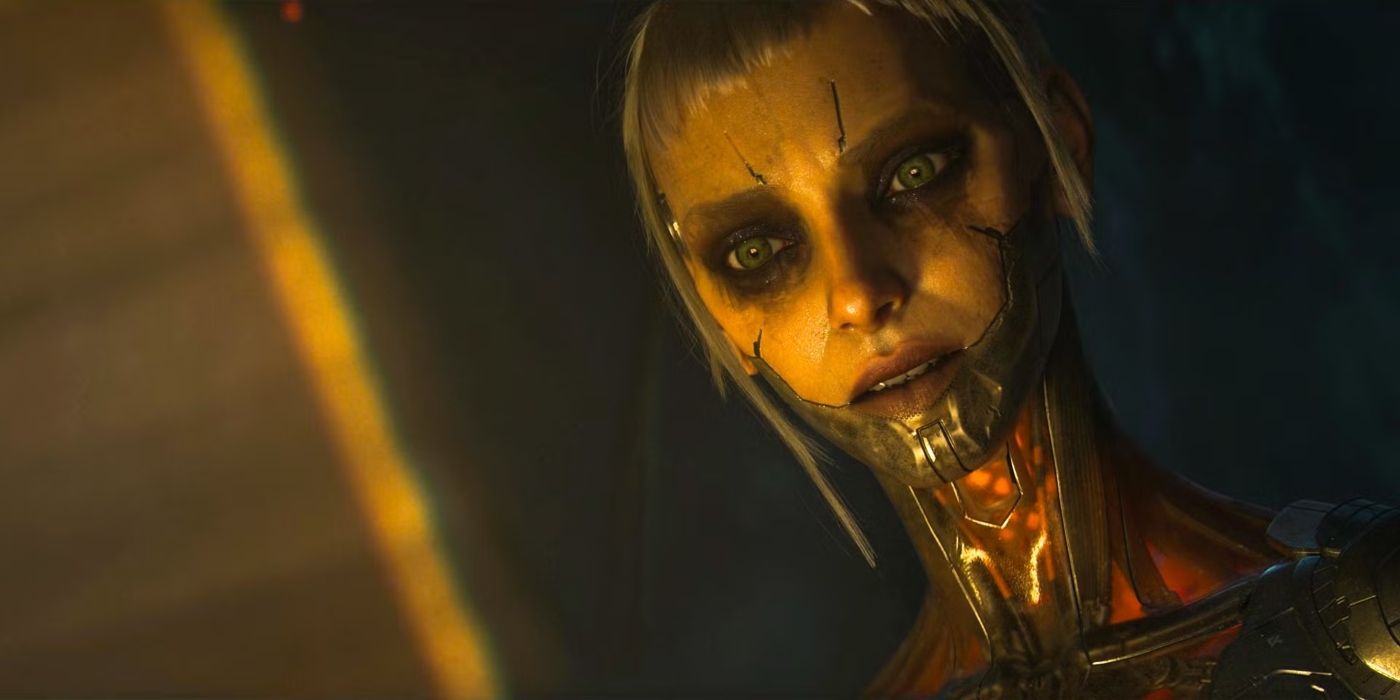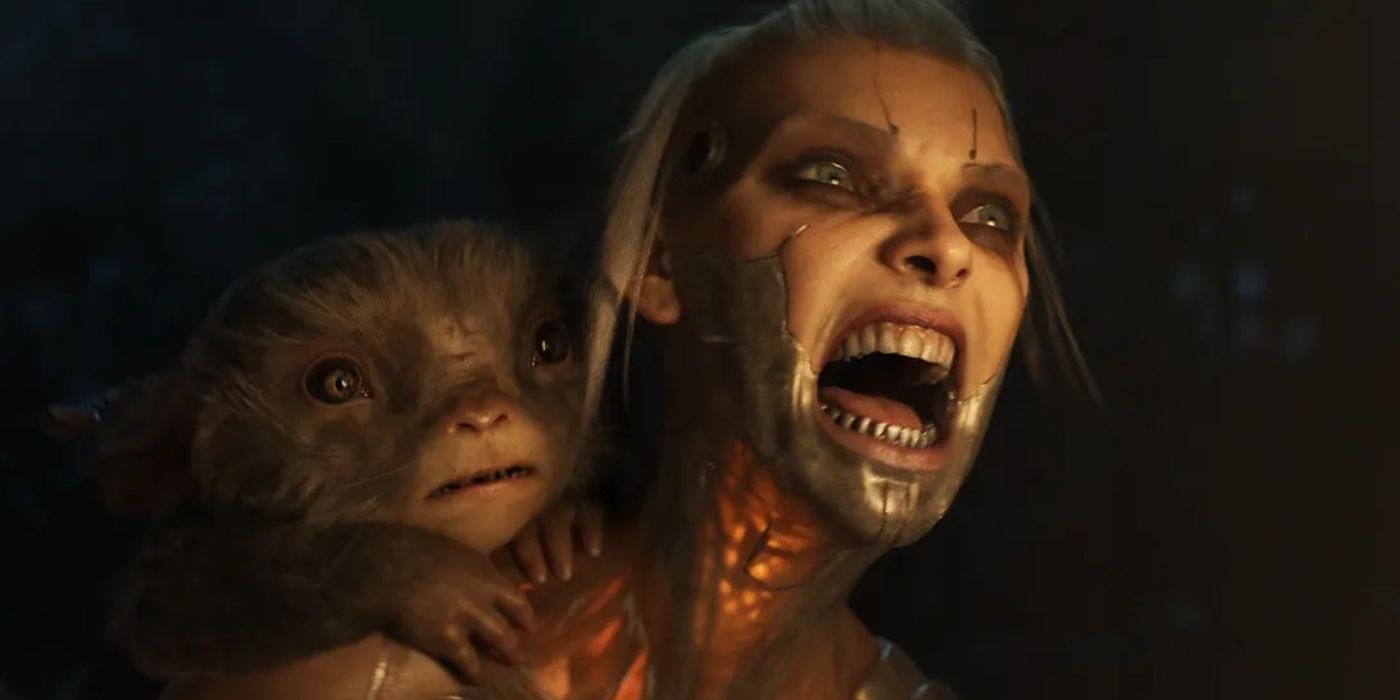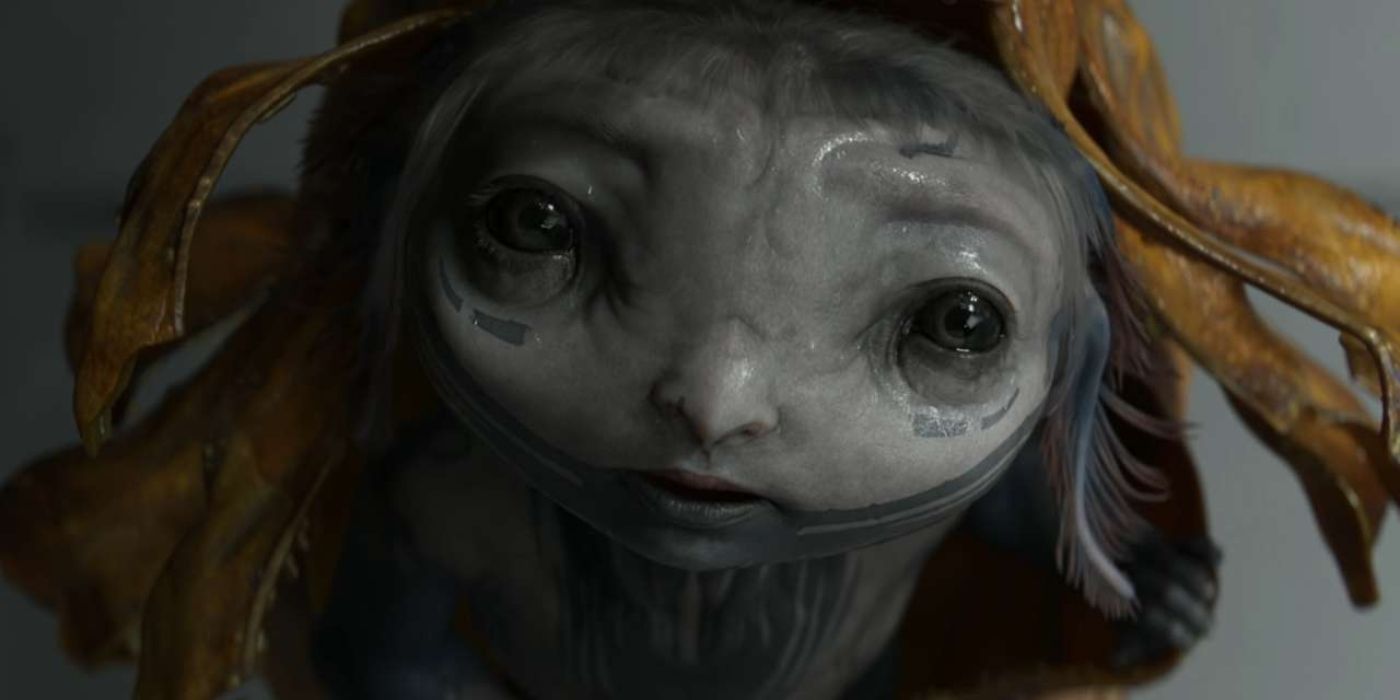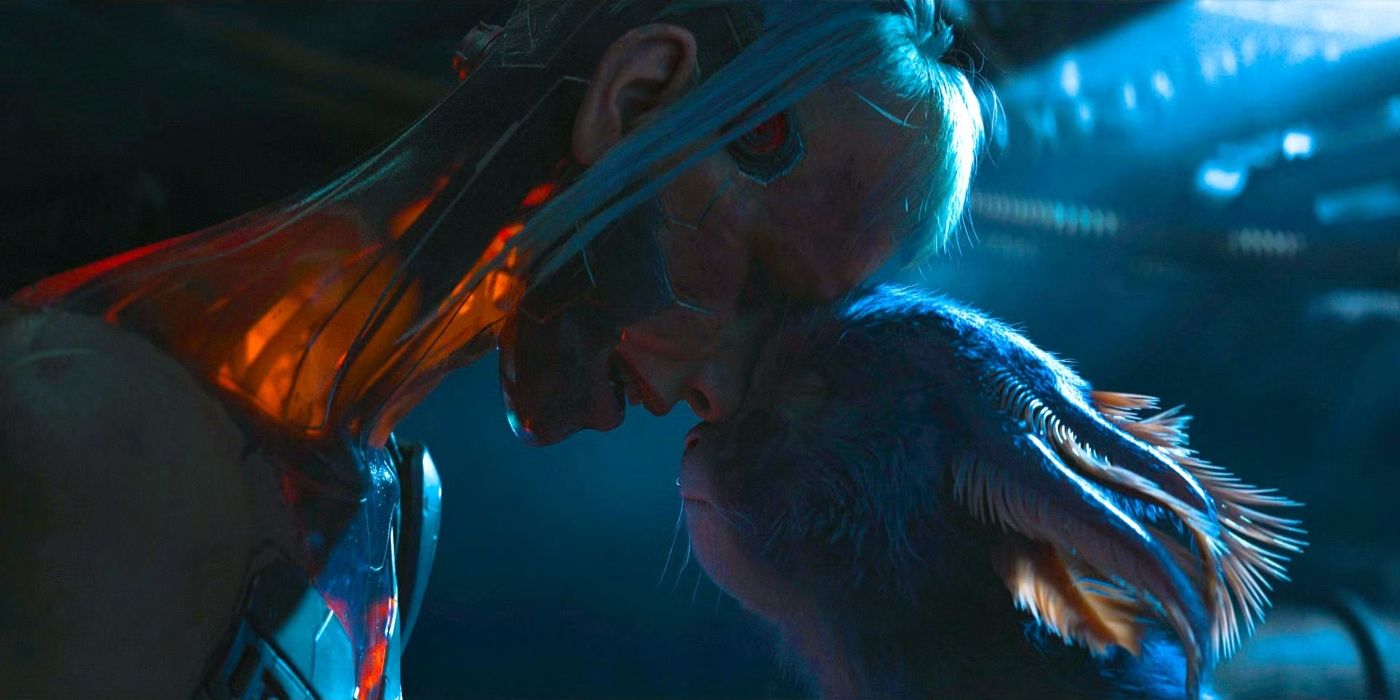
Regarding the animated series Love, Death + Robots, one can always expect episodes that are simultaneously stunning, disturbing, and emotionally intense. However, Episode 3 of Season 4, titled “Spider Rose,” does not merely test visual limits; it courageously rewrites the ending of its original source material. Instead of depicting a grim act of survival, it transforms this event into a dark form of compassion. Originating from Bruce Sterling’s short story within Schismatrix Plus, “Spider Rose” draws upon a segment of his elaborate Shaper/Mechanist universe, where biotech-enhanced elites confront cybernetic outcasts in a future Cold War centered on evolution.
In Sterling’s initial story, a solitary Mechanist named Spider Rose consumed an alien pet to stay alive. Conversely, in Love, Death + Robots, it is the pet, an unusual alien creature called Nosey, who devours its owner. Though surprising, this twist adds an extra layer of impact. Rather than Spider Rose transforming from consuming Nosey, the episode’s switch leaves viewers with a more peculiar sensation: submission, change, and a chilling form of affection.
‘Love, Death + Robots’ Moves Spider Rose From Predator to Prey

In the original story penned by Bruce Sterling, Spider Rose is a survivalist in every sense. Battered by war, deceit, and solitude, she regards Nosey, an innocent extraterrestrial pet, as both a comrade and a resource. As supplies dwindle, she eventually resorts to consuming Nosey, acquiring some of its genetic characteristics along the way. While this act may seem harsh, it aligns with the law of survival-of-the-fittest and the competition between biomechanical entities in her universe.
In the unique twist of the Love, Death + Robots adaptation, they radically alter the flow of power: the hunter becomes the hunted. Instead of devouring Spider Rose feeling like a betrayal, it feels more like an elevation for Nosey. This shift in roles transforms Spider Rose from the sole survivor to one who willingly relinquishes control. Rather than amassing power through consumption, she bestows it upon others. The episode suggests that this change is voluntary on her part. In a poignant moment before her demise, she softly assures Nosey that everything is alright. There’s an unusual warmth in her submission, a disconcerting tenderness that transforms the violence into something akin to love.
After Nosey joins the Investor’s ship at a later time, seeming to undergo an alteration that blends elements of Rose with its original self, it becomes evident that the essence of Spider Rose endures in a form different from what the short story initially conceived. This modification resolves the enigma surrounding Spider Rose, as Nosey had genetic mutations beyond what was required at the outset of the narrative. The alteration to the plot replaces harshness with a more nuanced progression. The traditional predator-prey relationship evolves into a tale of lineage and self-sacrifice, transforming Sterling’s ruthless survivalism into something richer in emotional depth.
Nosey’s Transformation in ‘Spider Rose’ Changes the Story

In the original content, Nosey is a temporary companion, initially acting as a cosmic comforter before eventually being eaten. Its function is essentially a transactional one – it’s charming, but ultimately disposable. On the other hand, in the animated adaptation, Nosey transcends its role as a mere narrative device. Instead, it emerges as the emotional focus of the episode, providing depth and growth to the character, not just physically but also from a storytelling perspective. In essence, by altering the ending, the series grants agency to Nosey, allowing it to develop and evolve.
In contrast to the original story focusing on solitary endurance, the Love, Death + Robots episode evolves into a narrative exploring themes of connection and metamorphosis. Instead of Nosey’s survival being an unexpected occurrence, it could be perceived as a consequence of empathy. The creature’s affection for Rose, protection of her from Jade’s attack, and the friendship offered add depth to its transformation. Essentially, Nosey serves as a symbol for memories, and the revised ending implies that kindness can be equally vital for survival as aggression.
The New ‘Spider Rose’ Ending is Undoubtedly Dark

In the final scene of “Spider Rose,” Nosey consuming the main character creates a grim, unsettling effect. The idea of a pet devouring its owner is undeniably disturbing and may cause discomfort among viewers. However, according to director Jennifer Yuh Nelson in an interview with TV Guide, this dark turn was challenging to depict visually without causing deep distress to the audience. Interestingly, she also mentioned that the ending served a dual purpose: it reflected the original story’s harshness and simultaneously provided a glimmer of hope.
The switch in the plot, making Nosey the one who endures, was primarily done to underscore a brief, intense moment of bonding between these characters. If you find this emotional connection believable, then the conclusion should reward that belief. For me, it not only intensifies the dark and disturbing aspects, but also offers a glimmer of hope, which is why the narrative was altered in such a manner.
The “Spider Rose” adaptation undergoes a transformation similar to the narrative’s own development. Initially, Spider Rose is portrayed as a cold-hearted Mechanist with no attachments. However, by the conclusion, she becomes an integral part of something greater than herself, both physically and symbolically. Similarly, the episode transitions Sterling’s rigid perspective into a reflection of contemporary audiences’ desire for significance, empathy, and intricacy.
Love, Death + Robots stands out in this area as well. It’s not just about creating a shock effect or stunning visuals; it also explores the unusual in a manner that resonates profoundly and at times unsettlingly with our human experience.
Love, Death + Robots is streaming on Netflix right now.
Read More
- PI PREDICTION. PI cryptocurrency
- How to Get to Frostcrag Spire in Oblivion Remastered
- Gaming News: Why Kingdom Come Deliverance II is Winning Hearts – A Reader’s Review
- How Michael Saylor Plans to Create a Bitcoin Empire Bigger Than Your Wildest Dreams
- Kylie & Timothée’s Red Carpet Debut: You Won’t BELIEVE What Happened After!
- We Ranked All of Gilmore Girls Couples: From Worst to Best
- S.T.A.L.K.E.R. 2 Major Patch 1.2 offer 1700 improvements
- WCT PREDICTION. WCT cryptocurrency
- Florence Pugh’s Bold Shoulder Look Is Turning Heads Again—Are Deltoids the New Red Carpet Accessory?
- PS5 Finally Gets Cozy with Little Kitty, Big City – Meow-some Open World Adventure!
2025-05-22 23:02